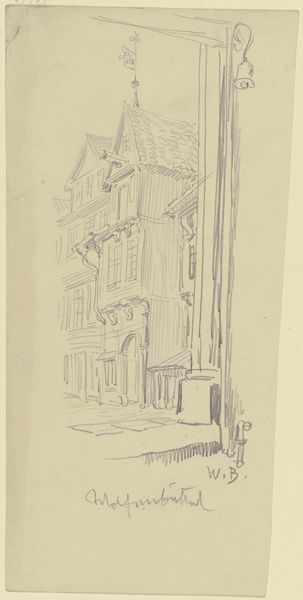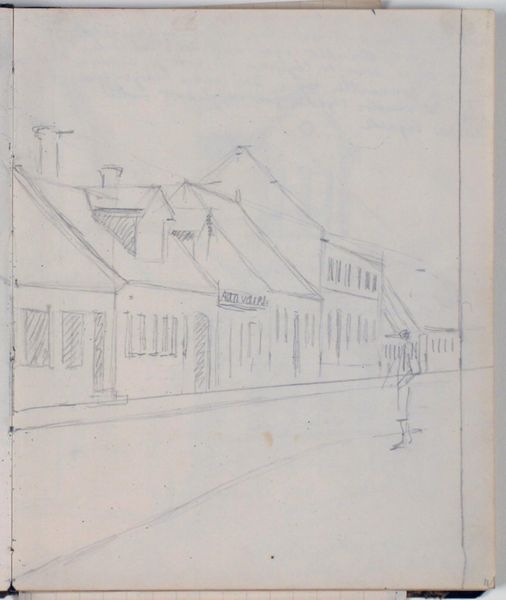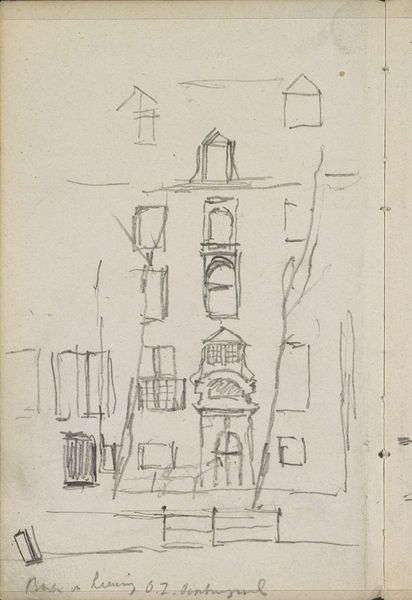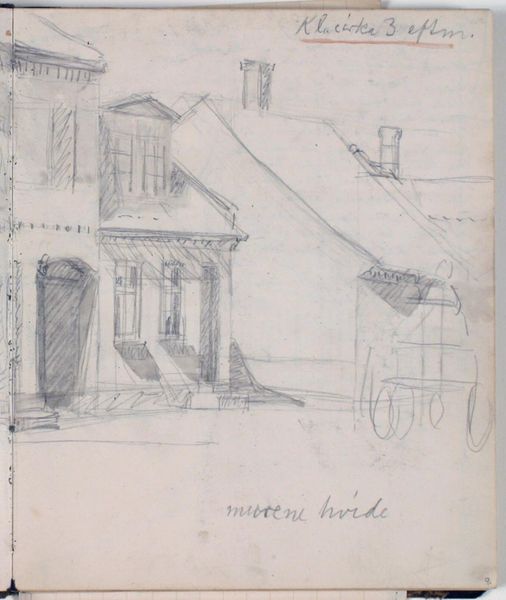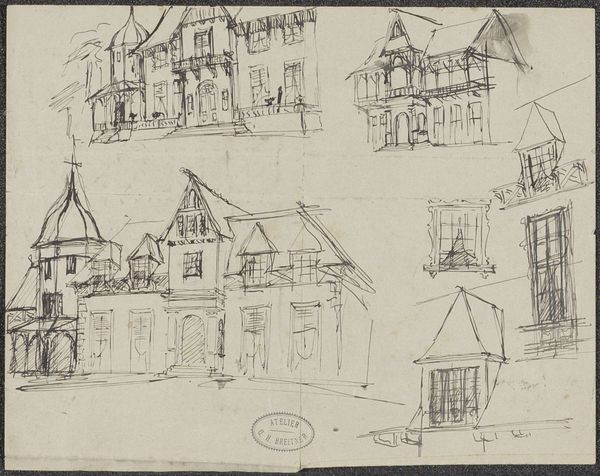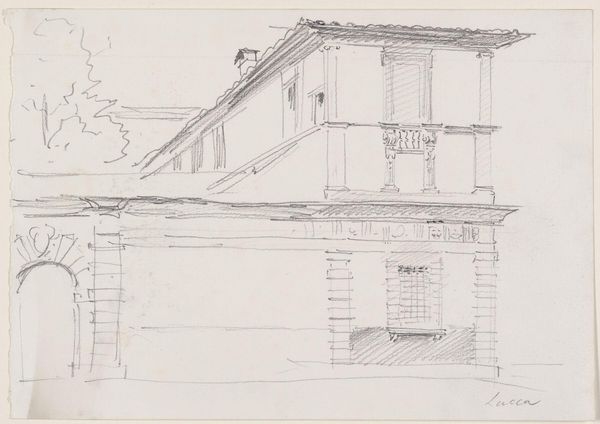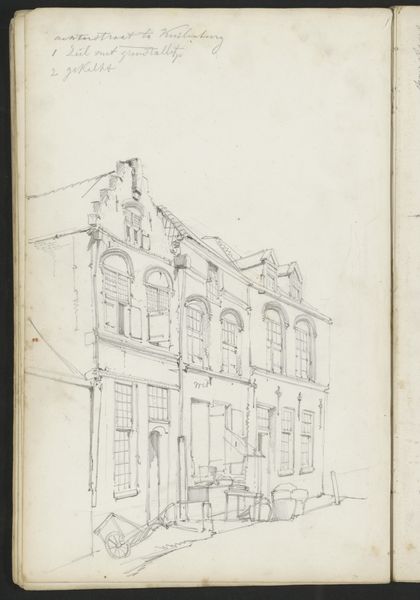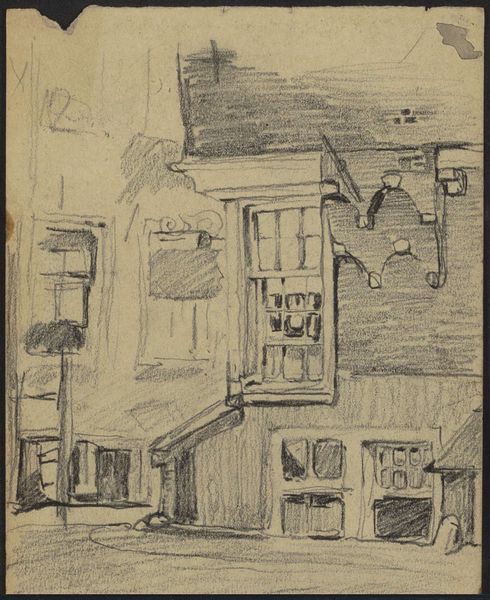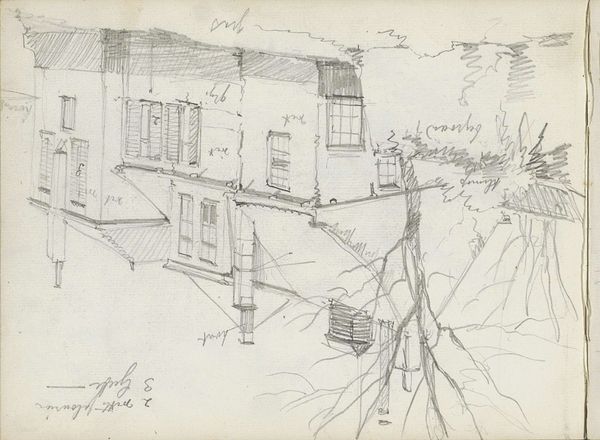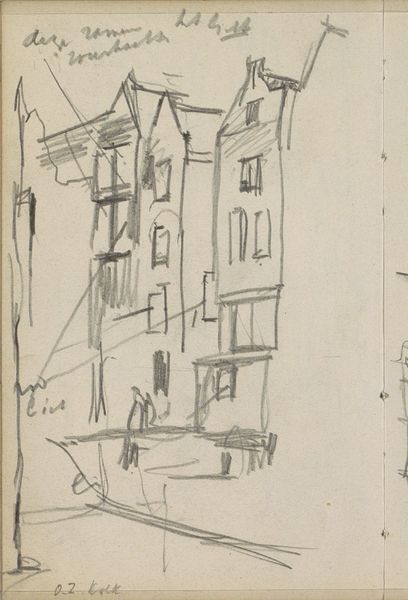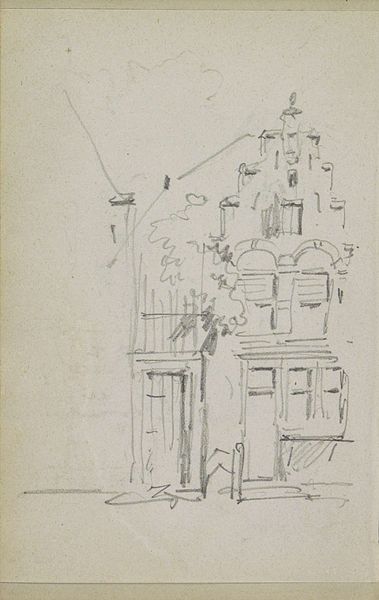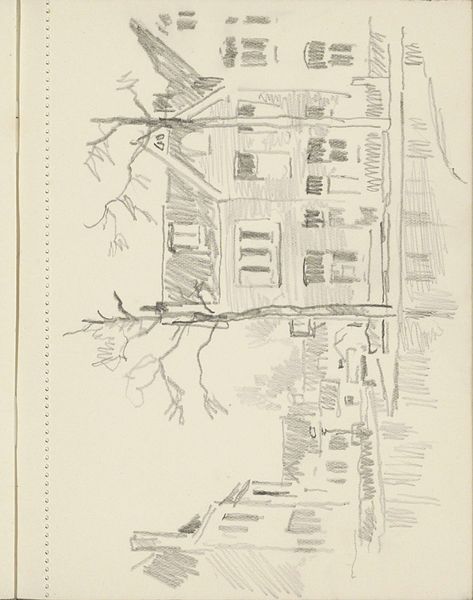
drawing, paper, pencil
#
drawing
#
paper
#
pencil
#
cityscape
Dimensions: 226 mm (height) x 185 mm (width) x 112 mm (depth) (monteringsmaal), 221 mm (height) x 184 mm (width) (bladmaal)
Curator: Here we have Niels Larsen Stevns' "Studier af bygninger. Notater," dating from 1930 to 1936. It’s a pencil drawing on paper, currently residing here at the SMK. What catches your eye? Editor: The sketch-like quality… almost ghostly. There’s a layering that creates a sense of a half-remembered place, seen through a veil. Like trying to grasp a fading memory of a specific urban scene. It reminds me of looking at buildings reflected on the street after the rain. Curator: Absolutely. I’m drawn to the immediacy. You get a sense of the artist capturing a fleeting impression. There's movement within the static structure; look how he layers those lines! Editor: And those fragments of text! It’s a fascinating peek into the artist's process, those marginalia add so much context and suggest there is more to this than just what is immediately obvious. Curator: Definitely. I get a sense of Stevns really engaging with the lived experience of the city; more than just replicating brick and mortar. Editor: Exactly! It makes me think about how architecture itself can be read as a text, a social document etched in stone, if you will. Who built this? For what purpose? Who gets access and who is excluded? The quick notations suggest this could also have a socio-economical aspect too. The architectural lines almost mimic mapping out inequalities, both real and imagined. Curator: Perhaps Stevns wanted to highlight the interaction between space, power and time. The layered approach evokes how structures can both age beautifully and reflect moments of history. The use of the pencil as his main tool also suggests this process, the marks are there forever once made. Editor: Indeed. It prompts a broader conversation about urban spaces, ownership, and the narratives they silently perpetuate, intentionally or unintentionally. What is visible in the cityscape and what’s obscured? It encourages us to think about cities not just as collections of buildings, but as sites of ongoing negotiation. Curator: I like that – the idea of the city as a "site of negotiation." It really sums up the dynamic feeling I get from the work. Editor: And the importance of seeing art beyond just its aesthetic value! Understanding the societal and political dimensions woven into the artwork can amplify its power tenfold. Thanks! Curator: To exploring what is, was and what could be!
Comments
No comments
Be the first to comment and join the conversation on the ultimate creative platform.
